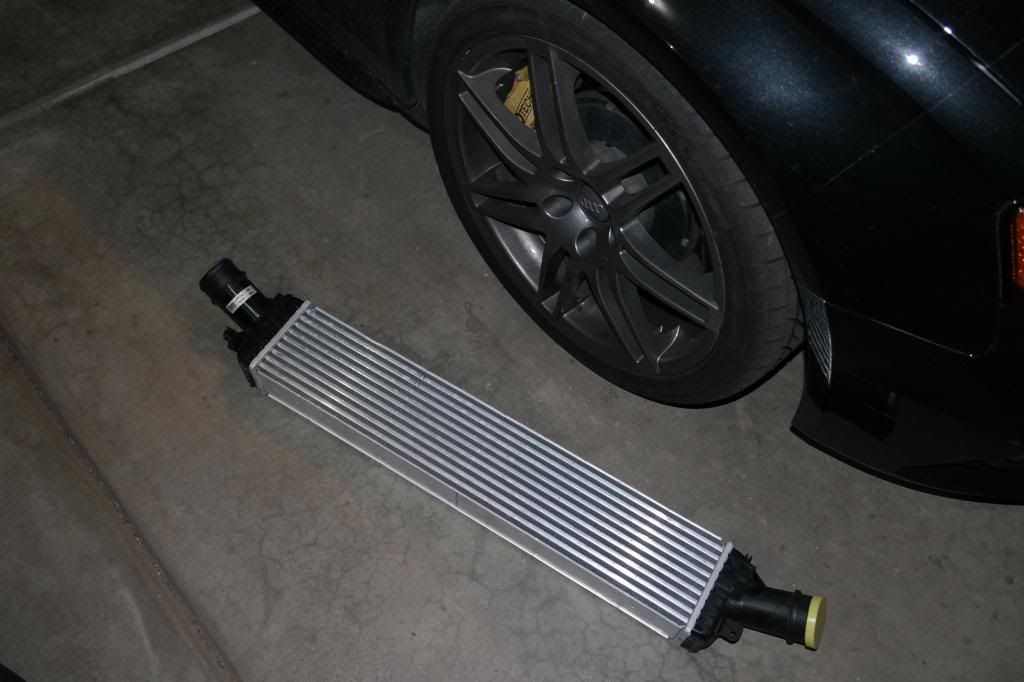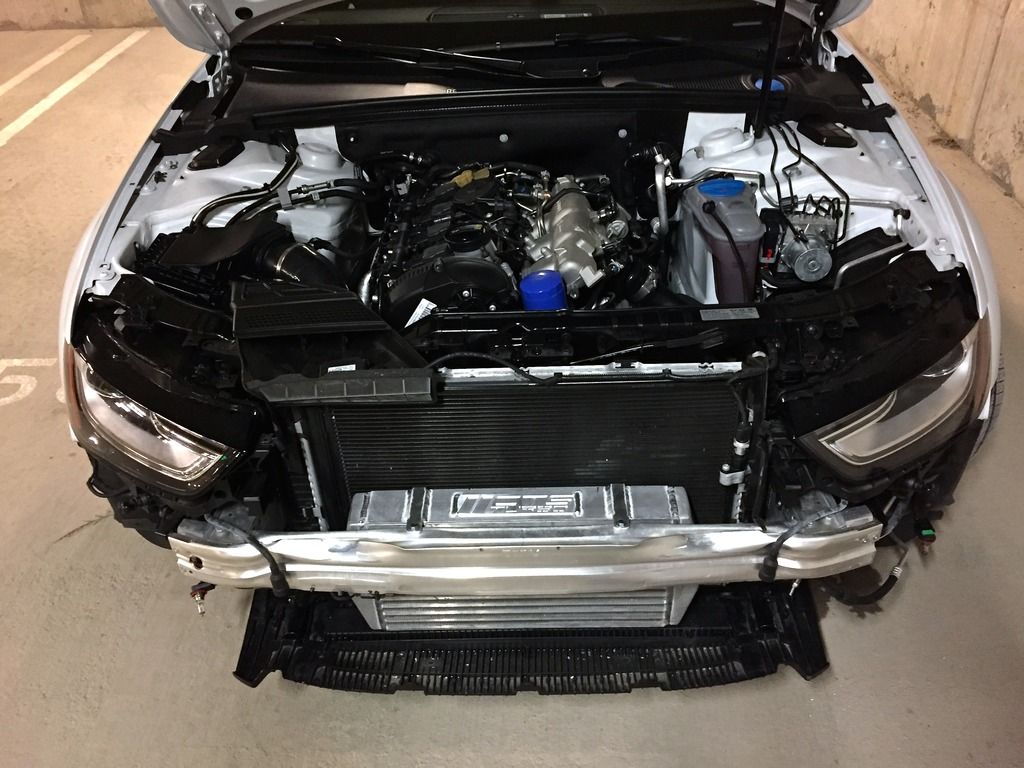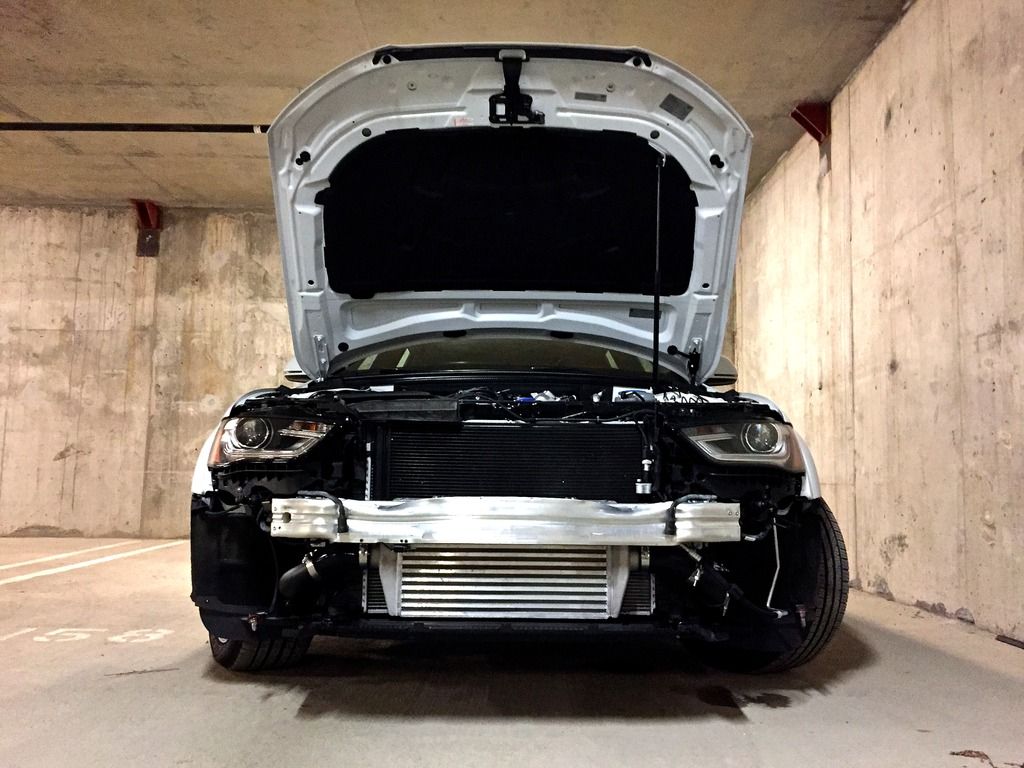The bottom portion of the intercooler would most certainly provide better performance than the portion that is behind the crash bar. The airflow through the cooler is going to be driven by the total pressure differential before it and after it. Total pressure is the sum of velocity pressure and static pressure. There will be virtually no velocity pressure behind the crash bar, but there will be static pressure: the entire intercooler/radiator/AC condenser assembly present a restriction to the airflow that will cause some of the velocity pressure from above and below the bar to be converted into static pressure. In air conditioning, we have what we call the "45° rule"... if you have an obstruction before the cooling coil, you want enough space between the obstruction and the coil so that the there is no more than a 45° angle required for the air to re-distribute over the entire face of the coil. That doesn't mean that at 45°, the air is distribution across the coil face is completely even, that's just considered a compromise point where the affect from the upstream obstruction is reduced enough to be acceptable. Hard to tell from the pictures, but it looks to me like there's not nearly enough space to clear the 45° rule (go up 45° from the bottom of the crash bar, the intercooler looks close enough that you would hit the intercooler before clearing the top of it).
It's not ideal, but the affect is probably not very noticeable. Even the top portion will be contributing to the cooling, just not as effectively as the bottom. Intercooler sizing is a trade-off: the bigger they are, the better they cool, but the larger the internal volume, the more they can affect transient response due to the time needed to pressurize all that space. The top portion will be additional volume that doesn't provide as much cooling for that trade-off. But as said, removing the crash bar shouldn't even enter into anyone's mind, especially for such a trivial difference.














 Reply With Quote
Reply With Quote





 CTSTurbo's quality is fantastic, and I highly recommend their products.
CTSTurbo's quality is fantastic, and I highly recommend their products. 






Bookmarks